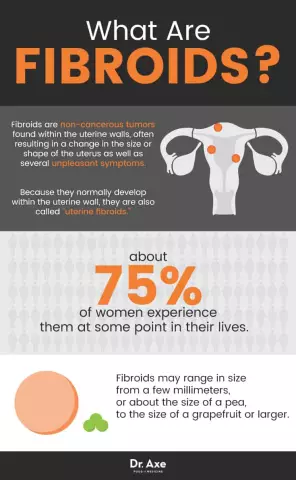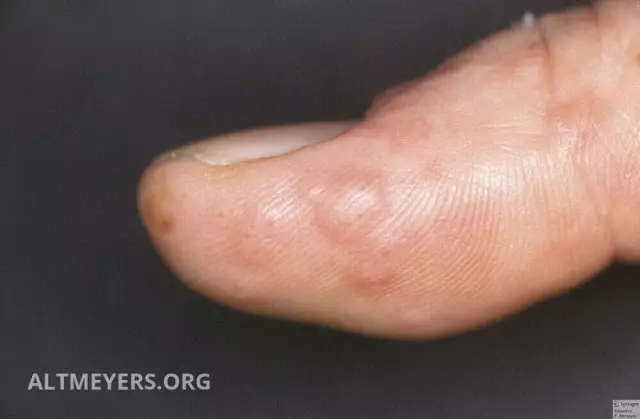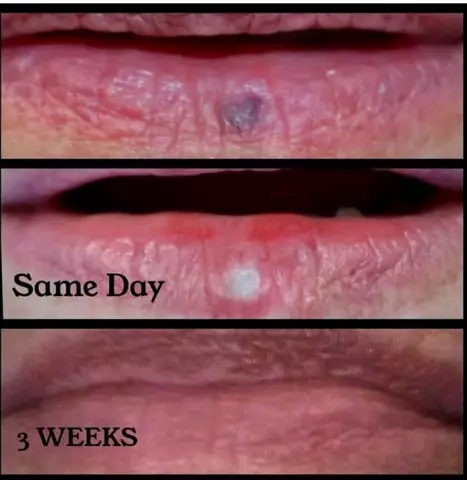- Author Rachel Wainwright [email protected].
- Public 2023-12-15 07:39.
- Last modified 2025-11-02 20:14.
Rheumatoid arthritis
Rheumatoid arthritis is a systemic autoimmune disease with predominantly joint damage, which is characterized by a chronic course with exacerbations. The disease affects people at any age, even children (juvenile rheumatoid arthritis), but more often after 40 years, women are more susceptible to it than men.
The reasons for the development of rheumatoid arthritis

The main reason for the development of rheumatoid arthritis is a failure in the immune system. Due to the failure that occurred, the cells of this system begin to react to the body's own tissues, as if they were foreign, and destroy them. In rheumatoid arthritis, immune cells react aggressively primarily to synovial tissue (the tissue lining the inside of the articular sac) and to the cartilage tissue of the joints.
The reason for this failure in the immune system remains unclear. There are factors that contribute to the onset of an autoimmune reaction, although a direct link between them and rheumatoid arthritis has not been established. These factors are:
- Viral infection;
- Hereditary predisposition (cases of rheumatic diseases among close relatives);
- The presence of chronic diseases;
- Postponed stress;
- Excessive physical activity;
- Hypothermia of the body;
- Prolonged exposure to damp and cold conditions.
Currently, doctors are inclined to believe that there is a genetic defect triggered by an infectious agent, in the presence of predisposing factors, that is, the cause of rheumatoid arthritis is a combination of conditions.
Rheumatoid Arthritis Symptoms
The disease begins as common arthritis, most often with damage to the symmetrical joints of the limbs. All the symptoms of rheumatoid arthritis appear: pain in the affected joint, swelling, limitation of mobility, the joint becomes hot to the touch. Sometimes these phenomena are accompanied by a deterioration in the general condition: fever, weakness, loss of appetite, etc. In some cases, unpaired joints, or one joint, can also undergo rheumatic attack, which is atypical and makes diagnosis difficult.
Typical symptoms of rheumatoid arthritis are morning joint stiffness, the formation of small subcutaneous seals in the joints, the so-called "rheumatoid nodules". For rheumatoid arthritis paroxysmal course is characteristic, rheumatic attacks are replaced by a period of remission of the disease. With the progression of the disease, deformation of the joint gradually occurs, due to which it loses its function, the muscle strength of the limb weakens. In advanced cases, the affected joints are completely immobilized as a result of the replacement of normal joint tissues with coarse scar tissue, ankylosis (fusion of surfaces) of the joint develops, and disability occurs.
The rheumatic process affects not only the articular tissue, it is only the first and to a greater extent exposed to destruction. In rheumatoid arthritis, internal organs are also affected, especially often the organs of the cardiovascular system (rheumatic pericarditis), nervous, digestive, etc. Some forms of the disease generally affect mainly internal organs, to a lesser extent affecting the articular tissue (visceral form of rheumatoid arthritis).
The disease, the symptoms of which appear in childhood (up to 16 years), is called juvenile rheumatoid arthritis. In general, it is characterized by the same symptoms of rheumatoid arthritis as in adults, including damage to internal organs. The difference between juvenile rheumatoid arthritis is that, as a rule, severe pain syndrome is not inherent in it, and after one or more attacks, spontaneous recovery may occur, although not necessarily. Juvenile rheumatoid arthritis often causes limb deformity, as the affected joint can either slow down or accelerate its growth compared to healthy joints.
Diagnosis of rheumatoid arthritis
The diagnosis of rheumatoid arthritis is quite difficult and is carried out in several stages. Doctors can speak with confidence about the rheumatoid nature of the disease only after five rheumatic attacks and confirmation of observation data for the course of the disease by laboratory diagnostics and X-ray studies. An immunological study of blood is carried out, the so-called rheumatic tests, which reveal the presence of specific antibodies and immune complexes. X-rays are used to assess the degree and nature of the destruction of the affected joint. A characteristic symptom of rheumatoid arthritis is a certain type of deformity of the inner surfaces of the joint - urging deformity.
Treatment for rheumatoid arthritis

Treatment of rheumatoid arthritis consists of drug therapy, non-drug means, and in case of development of ankylosis of the joint, they resort to surgical treatment, during which the affected joint is replaced with an artificial one. Often and not unsuccessfully they resort to the treatment of rheumatoid arthritis with folk remedies.
Medication for rheumatoid arthritis includes:
- Non-steroidal anti-inflammatory drugs (NSAIDs) relieve acute symptoms of inflammation, pain and swelling;
- Steroidal anti-inflammatory drugs are also aimed at reducing inflammation;
- Basic drugs. An extensive group of pharmaceutical products, the action of which is aimed at protecting the joint, preventing its destruction and promoting the regeneration of destroyed tissue.
Non-drug, non-surgical treatment of rheumatoid arthritis supplements the intake of medication, and during periods of remission of the disease helps to restore the normal function of the affected joints. For this purpose, physiotherapy, physiotherapy, orthopedic devices that help the joint to function, acupuncture, and lifestyle correction are widely used, which is of great importance for achieving stable remission.
Medicines used to treat rheumatoid arthritis, especially NSAIDs and glucocorticoids, have many undesirable side effects, especially with prolonged use. This presents a problem, since the treatment of autoimmune diseases is usually long and persistent. Therefore, quite often they resort to the treatment of rheumatoid arthritis with folk remedies. So, decoctions and infusions of medicinal herbs are widely used, both in the form of teas and locally - in the form of baths, compresses and lotions for the affected joints, they use the wrapping of diseased joints with leaves of medicinal plants. There is evidence of the use of tar and mummy. The use of folk remedies for rheumatoid arthritis is unlikely to be able to cure the disease completely, but it helps to relieve acute inflammation, which greatly facilitates the patient's condition,and allows you to reduce the drug load.
YouTube video related to the article:
The information is generalized and provided for informational purposes only. At the first sign of illness, see your doctor. Self-medication is hazardous to health!






